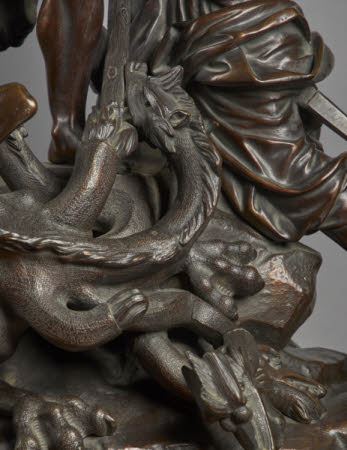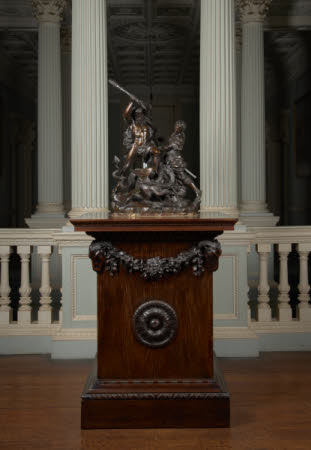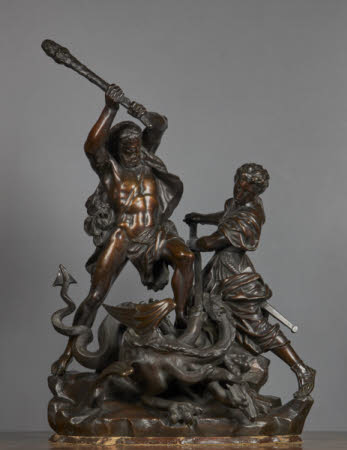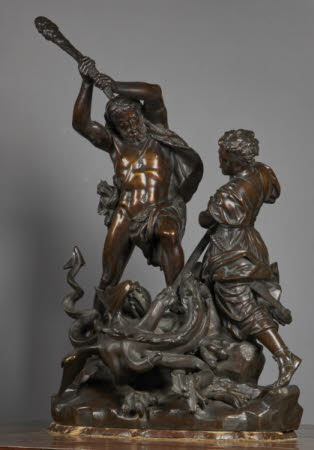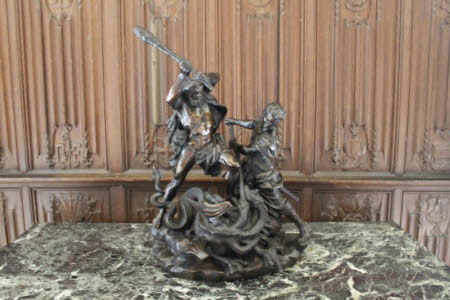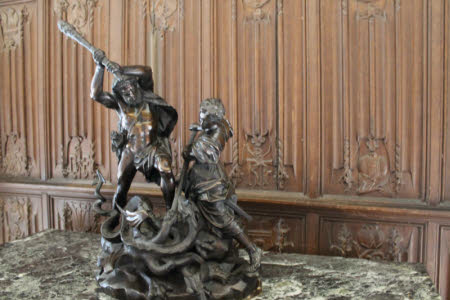Hercules and Iolaus slaying the Lernaean Hydra
attributed to Antonio Montauti (Florence fl. 1685-Rome 1740)
Category
Art / Sculpture
Date
1700 - 1729
Materials
Bronze
Measurements
710 mm high
Order this imageCollection
Vyne Estate, Hampshire
NT 719168
Summary
Bronze sculpture group, Hercules and Iolaus slaying the Lernaean Hydra, attributed to Antonio Montauti (Florence fl. 1685-Rome 1740), early 18th century. To atone for the murder of his six sons, instigated by Juno, and achieve immortality, Hercules (son of Jupiter) was ordered to perform Twelve Labours. The second of which is depicted here. The Lernaean Hydra, one of the many offspring of half-woman and half-serpent Echidna and one hundred-headed Typhon, was a many headed serpent who lived in the swamps near Lake Lerna. One of hydra's heads was impervious to weapons. Its other heads could be cut off, but then one or two would grow back in its place. The Hydra devoured animals and people in the countryside and its venom was deadly. Iolaus, his nephew and charioteer, cauterized the stump of each head as soon as Hercules cut it off. When only the immortal head was left, Hercules tore it off and buried it only after he dipped his arrows in the poisonous blood, making them lethal, one of which he later killed the centaur Nessus with. This bronze group probably derives from that in the Abegg Stiftung, Bern. Algardi did another version of which exists a copy at the Wadswoth Atheneum, USA. Another cast attributed to Antonio Montauti with another group of Hercules slaying Diomedes as a pair was owned by Michael Hall and exhibited at Osama Gallery, 1983.
Makers and roles
attributed to Antonio Montauti (Florence fl. 1685-Rome 1740) , sculptor

